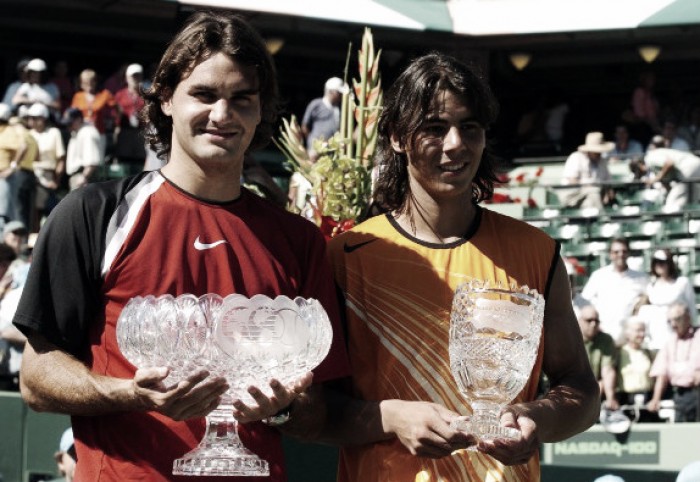For the second time already in 2017, a big event will be decided by the dream final. World numbers four and five Roger Federer and Rafael Nadal will do battle in the final of the Miami Open on Sunday, the pair’s third meeting this year and second in a big final. Federer will be looking to sweep the early hard court events for the second time in his illustrious career, while Nadal is hoping to finally claim the Miami crown after falling in the final four times already.
The final will take place on Sunday at 1 pm eastern time.
How they got here
Federer has been red hot so far in 2017, having won both big events to start the season (Australian Open and Indian Wells). However, the Swiss has looked a little more vulnerable this week in Miami, which has historically been his weakest event out of the big three early hard court events. The Swiss has needed a tiebreak in four of his five matches so far, including two deciding set tiebreaks in the last two rounds. He beat Frances Tiafoe, Juan Martin del Potro and Roberto Bautista Agut all in straight sets before having to save two match points to outlast Tomas Berdych in the quarterfinals in a third set tiebreak. In the semifinals, Federer needed more than three hours to put away Nick Kyrgios in an epic that saw all three sets decided in tiebreaks.

Nadal has been getting better with every round after receiving a wake-up call in the third round. The Spaniard dropped the opening set of his third round clash with Philipp Kohlschreiber 6-0, but has been untouchable on serve since, cruising past Nicolas Mahut, Jack Sock, and Fabio Fognini, all in straight sets. After the bagel against Kohlschreiber, Nadal has only dropped serve once. He has also only faced seven break points in the last eight sets he's played, all of them in the quarterfinal against Sock. The Spaniard comes into the final after arguably the best serving display of his career in the semifinals, only losing nine points on serve in his win over Fognini.
The History
The Miami final will be the 37th meeting in the pair’s historic rivalry. Nadal leads the head-to-head 23-13, however Federer has won the last three matches in a row, the first time in their 13-year rivalry that the Swiss has beaten Nadal three times consecutively. Two of those three wins have come this year, including the Australian Open final and the fourth round of Indian Wells, which was a blowout in favour of Federer. Still, Nadal leads 12-5 in Masters 1000 matches and 7-3 in Masters 1000 finals. The match will serve as a tiebreaker in their head-to-head on hard courts, which is currently tied 9-9, although Nadal leads 8-4 on outdoor hard courts.
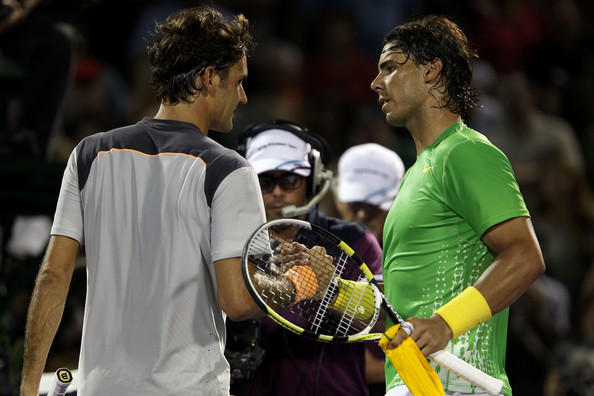
The pair also have a long history in Miami. This will be their fourth meeting in Miami, with Nadal having won two of those three meetings. The first two matches ever played between Federer and Nadal were in Miami, with the Spaniard upsetting the then-world number one in the third round in 2004, before Federer exacted revenge a year later in the final, coming back from two-sets-to-love down to claim the title over Nadal. That was their lone finals meeting in Miami and the first of Nadal’s four losses in the final. The Spaniard won their most recent meeting in Florida, blowing out Federer in the 2011 semifinals.
The Surface
The slow hard court in Miami would theoretically give an advantage to the more physical, grinding Nadal. The Spaniard has a slightly higher career winning percentage than Federer in Miami and has reached four finals to the Swiss’ two, which seems to suggest that he is better at this venue. That being said, Nadal is 0-4 in those finals, while Federer is 2-0.
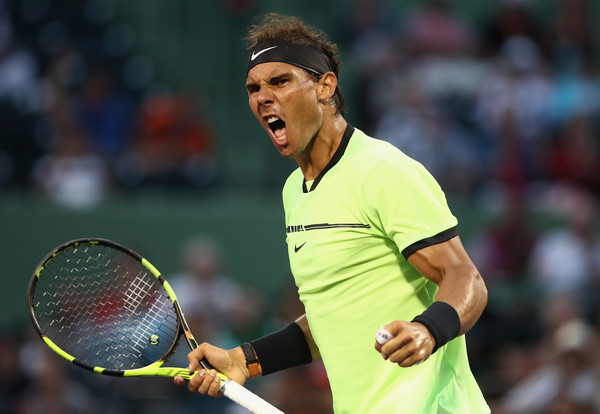
However, Nadal has looked the far better player this week as the Swiss seems to be running out of gas in tough matches. While this could be because of the amount of matches he’s played lately, it also could be the hot, humid conditions affect the 35-year-old more than his 30-year-old opponent in the final. It is worth noting, though, that Federer has beaten Nadal twice in hot, slow environments already in 2017.
Federer’s return vs. Nadal’s serve
Normally in Federer-Nadal match-ups, it’s Nadal’s return against Federer’s serve. However, the big reason why the Swiss won both of their meetings already this season was his return of serve, specifically on his backhand. In the fifth set of the Australian Open and throughout their Indian Wells meeting, Federer teed off on the Spaniard’s weaker serve, taking away Nadal’s favourite tactic. The Spaniard had no response to his go-to strategy failing so miserably and was promptly blown off the court.
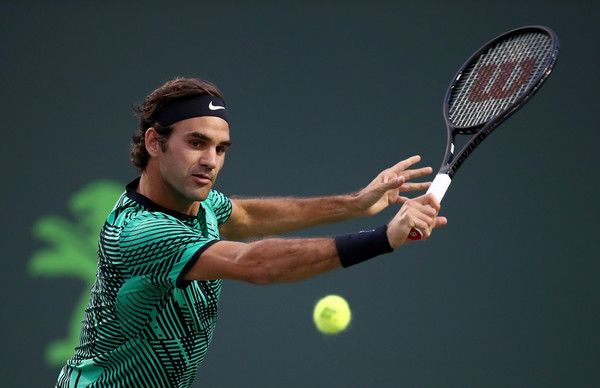
However, not only is Federer not playing as well going into the final as he did in Melbourne or Indian Wells, Nadal is serving at his highest level since the summer of 2013. He’s mixing up his serve brilliantly, targeting all corners of the service box, and doing so with a variety of pace and spin. A strong returner like Fabio Fognini couldn’t solve the Nadal serve at all in the last round. Nadal’s confidence appears high going into the final, which means he may not attack the Federer backhand so much if it’s switched on. If Nadal continues to serve at this high level and varies his targets, he can take away the weapon Federer has used to win their last two matches.
Dominance and fitness
In a way, matches between these two men are simple: whoever controls the rallies wins. This is arguably more important for Federer, because Nadal can win this match from a defensive position. But if Nadal is allowed to dominate the rallies, it will be very difficult for Federer to win this match. Especially in the Miami heat, Nadal can wear Federer down.
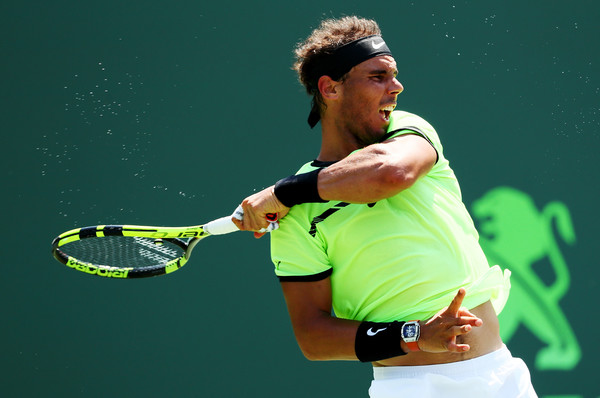
It will be interesting to see how aggressive Federer chooses to be. The Swiss has not spent as much time at the net during Miami or during his title run in Indian Wells. He didn’t need to attack the net in California, but Indian Wells is a faster surface than Miami. Rallies are longer and harder in Miami and considering that Federer has spent way more time on court than Nadal, he can’t exchange body blows with the younger, fitter, and less tired Spaniard. The Swiss needs to step up, take initiative, and put Nadal away. The longer the rallies, the bigger the advantage to the Spaniard.
Federer will win if: He keeps his foot on the gas. Federer can be trusted to serve well. He had to in his last two rounds and he hung on for tight victories. But he cannot let up because if he falls behind a break considering how well Nadal has been serving, it could be very hard for him to get back in the match. On top of that, he can’t let leads get away. If the momentum is with him, he needs to ride it as long as he can because Nadal has a huge physical advantage. A short match is one Federer can win.
Nadal will win if: He keeps Federer guessing. This applies both to serve and the rallies. Perhaps Nadal’s biggest weakness throughout his career has been his devotion to his tactics. Everyone knows exactly what he’s going to do in the match and if Federer takes away plan A, that’s when the Swiss wins. That’s what happened in Melbourne and Indian Wells. That cost Nadal in both his Miami final losses to Novak Djokovic. Federer is expecting an assault on his backhand, especially when Nadal serves. What the Spaniard has done well since the Kohlschreiber match is mix up his serve. If he does that, he can keep Federer out of a rhythm, which the Swiss needs to win. If Nadal is keeping Federer on the backfoot and spreading him all over the court, he can finally break the jinx is the south-east.
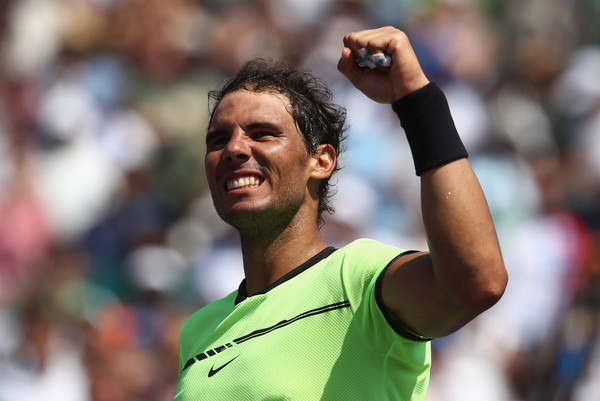
Prediction: Nadal is 3 sets
Federer has been vulnerable all week and has looked a bit worn down. In the heat and humidity in Miami and against an opponent who thrives on physical competition, he may finally be in over his head. But beyond that, Nadal has been brilliant all week, seemingly getting stronger with every match, especially on serve.
Berdych and Kyrgios were able to use their big serves to put pressure on Federer, but didn’t have much of an answer for the Federer serve. Nadal is serving at a level where he can put pressure on Federer, but also has the return and rally game to wear the Swiss down. Nadal looks confident and is certainly fired up after losing twice in both big events this year to Federer. He will have no intention of being swept. The fifth time will be the charm for the Spaniard.










































